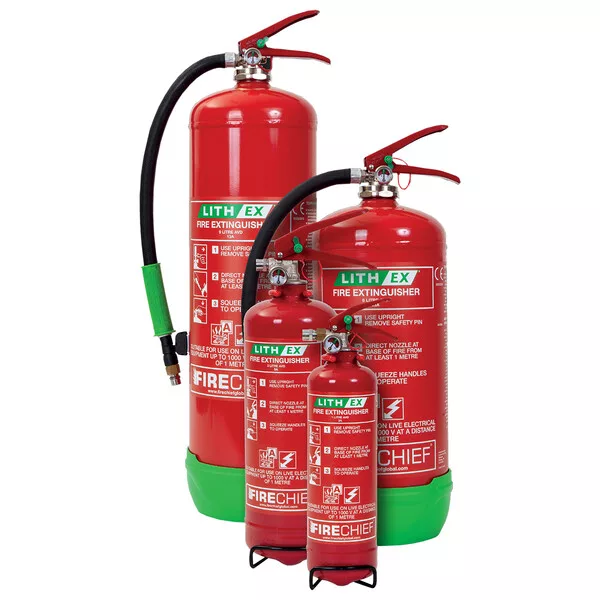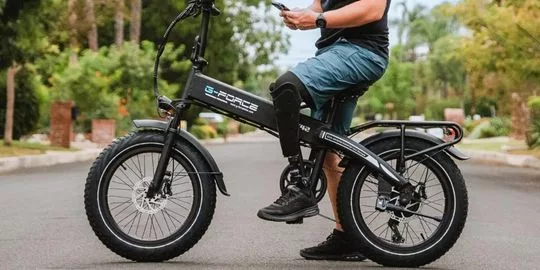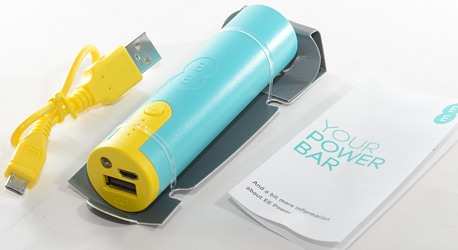A lithium-ion or li-ion battery is a type of rechargeable battery. However, these batteries use reversible reduction of lithium ions to store energy. Lithium-ion batteries are used worldwide. Typically, these batteries are often found in portable consumer electronics and electric vehicles. However, they are also a key component in large-scale energy storage systems and aerospace. Li-ion batteries are currently the most used type of rechargeable battery. Due to the incorrect disposal of lithium-ion batteries, experts are warning that we are likely to see an increase in recycling plant fires.
How Do Lithium-ion Batteries Work?
Lithium-ion batteries work by using a chemical reaction to store energy. In essence, they contain a:
- Cathode (positive electrode)
- Anode (negative electrode)
- Electrolyte (a solution that allows ions to move between the electrodes).
So, when the battery is charged, lithium ions are forced from the cathode to the anode. This is where they are stored. Then, when the battery is discharged, the lithium ions flow back to the cathode, releasing energy in the process.
Compared to other types of rechargeable batteries, lithium-ion batteries have a higher energy density. In other words, meaning they can store more energy in a smaller package. As a result, we will experience a lower self-discharge rate meaning the battery loses less charge over time. Also, we can expect a longer lifespan.
However, lithium-ion batteries have their negatives. Typically, they are considered more expensive and have a higher risk of overheating or catching fire if not used or handled properly.
How to Tell if a Lithium-ion Battery is Bad
There are several signs that a lithium-ion battery may be bad or nearing the end of its useful life. Here are a few things to look out for:
Reduced Capacity
Reduced capacity is one of the most common signs that a lithium-ion battery is going bad. In general, all lithium-ion batteries will lose some of their capacity. However, if you notice a significant reduction in the amount of time your battery can hold a charge. It may be time to replace it.
To determine the capacity of your battery, you can use a battery tester on your laptop or other devices. These tools will provide you with information about the current capacity of your battery, as well as its voltage and other parameters.
Noise
A hissing noise is not a common sign of a bad lithium-ion battery, but it could be an indication of a serious problem. In fact, if you hear a hissing noise coming from your battery, it could be a sign that the battery is leaking. Subsequently, this can be dangerous and pose a risk of fire or explosion.
If you hear a hissing noise coming from your battery, immediately stop using the battery and remove it from the device. Do not attempt to charge or use the battery again. Place the battery in a fireproof container and contact a professional to dispose of it safely.
In general, it is important to regularly inspect your lithium-ion batteries for signs of damage or wear. For example, you may experience physical damage, swelling, or overheating. If you notice any of these signs, it is important to replace the battery immediately to avoid potential safety risks.
Odour
If you detect a strange or unpleasant odour coming from your battery, it could be a sign of a serious problem. I.e. a pungent or sour smell could be an indication that the battery is leaking or has been damaged. The odour could be caused by a number of factors, including overheating, physical damage, or a chemical reaction within the battery.
In general, if you notice any unusual odours coming from your lithium-ion battery, it is important to immediately stop using the battery and remove it from the device. Consequently, do not attempt to charge or use the battery again. Place the battery in a fireproof container and contact a professional to dispose of it safely.
Regularly inspecting your lithium-ion batteries for signs of wear or damage. For example, physical damage, swelling, or reduced capacity, can help you identify potential issues before they become serious safety risks. If you notice any of these signs, it is important to replace the battery as soon as possible to avoid potential safety hazards.
Smoke
If you see smoke coming from your lithium-ion battery, it is a serious sign that the battery is going bad. In short, smoke from a lithium-ion battery can be toxic and also pose a risk of fire or explosion. So, if you notice smoke coming from your battery, immediately stop using the battery and remove it from the device.
Swollen or Bulging Battery
A battery that appears to be swollen or bulging in shape is a clear sign that the battery is going bad and should be replaced immediately. Swollen or bulging batteries can be dangerous and should not be used.
Overheating
If your lithium-ion battery is getting unusually hot when in use, this could be a sign that the battery is bad. Overheating batteries can be a safety hazard and should be replaced as soon as possible.
Age
Lithium-ion batteries have a limited lifespan, typically around 2-3 years. If your battery is getting up there in age, it may be time to replace it, even if it appears to be functioning normally.
Error Messages
Some devices may display error messages or warnings when a battery is going bad. If you are seeing these messages, it is best to replace the battery as soon as possible.
In general, if you notice any unusual behaviour from your lithium-ion battery, such as those listed above, it is best to replace the battery to avoid potential safety hazards.
Can Lithium-ion Batteries Catch Fire?
Yes, faulty lithium-ion batteries can catch fire or even explode. Firstly, lithium-ion batteries are widely used in electronic devices. For example smartphones, laptops, and electric vehicles. They are used in these devices because they are lightweight, rechargeable, and have a high energy density. However, if the battery is damaged, defective, or overcharged, it can cause a chemical reaction that generates heat and potentially ignites the flammable electrolyte inside the battery.
In some cases, a phenomenon called “thermal runaway” can occur. In this case, a lithium-ion battery will overheat and rapidly release energy. Subsequently, causing a fire or explosion. This can happen even when the battery is not in use or is being charged.
It’s important to follow the manufacturer’s instructions for charging and using lithium-ion batteries and to be cautious of any signs of damage or abnormal behaviour, such as swelling or overheating. If you suspect that a battery may be faulty, stop using it immediately and dispose of it properly.
Generally, manufacturers of lithium-ion batteries take several steps to prevent thermal runaway. Now that manufacturers are beginning to:
- Include protective circuitry.
- Design the battery to withstand high temperatures.
- Use materials that are less likely to catch fire.
However, it is important to handle lithium-ion batteries carefully, avoid overcharging them, and avoid exposing them to extreme temperatures or physical damage.
What Fire Extinguisher for Lithium-ion Batteries?
Lithium-ion battery fires can be dangerous and challenging to extinguish. The FireShield Lith-Ex fire extinguisher is ideal for use on lithium battery fires and is compact, lightweight, easy to store, non-toxic and environmentally friendly.
Here are some additional steps you can follow to put out a lithium-ion battery fire:
- Evacuate the area:
- If you’re in an enclosed space, immediately evacuate the area and call emergency services.
- Cut off the power source:
- If it’s safe to do so, cut off the power source to the battery. For example, unplug the battery or disconnect any cables.
- Smother the fire:
- Lithium-ion batteries can burn very hot, so you need to smother the fire with a FireShield Lith-Ex fire extinguisher or a fire blanket to cut off the oxygen supply.
- Cool the battery:
- Once the fire is out, cool the battery with water or a fire hose, making sure not to apply too much water as it can spread the fire or create electrical shock hazards.
- Dispose of the battery:
- After the battery has been extinguished and cooled down, it should be disposed of properly in a hazardous waste facility.

Do Lithium-ion Battery Fires Need Oxygen?
Yes, lithium-ion battery fires require oxygen to sustain the combustion reaction.
Lithium-ion batteries contain flammable electrolytes, which can ignite if the battery is damaged or overheated. Once the fire starts, it will typically require an external source of oxygen to continue burning.
In fact, one of the safety features of lithium-ion batteries is that they include a separator that is designed to prevent the electrodes from touching and shorting out, which could cause the battery to overheat and potentially catch fire. Additionally, some lithium-ion battery designs incorporate a flame-retardant material to help prevent the spread of fire in the event of a thermal runaway.
Poor Disposal Of Lithium-Ion Batteries
Material Focus, an independent not-for-profit organisation, conducted a report surrounding the disposal of lithium-ion batteries in 2023. This report found nearly 700 fires occur each year in the UK due to poorly discarded batteries. Of those 700, 200 were caused by lithium-ion batteries. Because of this, Material Focus is now on a mission to stop electrical appliances from being thrown away incorrectly.
Lithium-ion fires have been a topic of discussion for a long time now. Additionally, questions about the safety of charging electric vehicles (EVs) in underground car parks are proving to be particularly worrisome with the number of fires occurring. This has also sparked concerns over the use and disposal of e-bikes and e-scooters.
Typically, we think of electric cars as being the issue. However, lithium-ion batteries can be found in a number of products including electric toothbrushes, laptops, power tools, mobile phones and e-cigarettes. All of these products are experiencing the same lithium-ion battery recycling issues.
It was reported that 1.3m disposable vapes are incorrectly disposed of each week. This amount of vapes accumulates to 10 tonnes of lithium a year, equivalent to the lithium-ion batteries inside 1,200 electric vehicles.

Lithium-ion Batteries in the World
It is estimated that by 2030, the worldwide number of lithium-ion batteries produced will hit 2 million metric tons per year. If current numbers of spent lithium-ion battery disposals continue to follow their trajectory, 1.9 million will likely end up causing issues in a landfill. Recycling these popular power packs recovers and repurposes valuable metals and other materials used in a lithium-ion battery. Currently, only 5% of used lithium-ion batteries are recycled. Interestingly, 45% of households are unaware of the fire risk when disposing of batteries. As the market for lithium-ion batteries is growing exponentially, we need to begin educating people.
How To Recycle Lithium-Ion Batteries
In the UK, it is important to dispose of lithium-ion batteries properly to avoid environmental and safety hazards. Here are some ways to dispose of lithium-ion batteries:
Recycling: The most responsible way to dispose of lithium-ion batteries is by recycling them. You can take them to your nearest recycling centre, which will have a designated bin for batteries. Most local councils in the UK offer battery recycling services, so you can check with your council or visit their website to find out more.
Retailer drop-off: Many retailers that sell batteries, such as electronics and hardware stores, offer drop-off points for old batteries. These retailers will then recycle the batteries for you. Some examples of retailers that offer battery recycling services in the UK include Argos, Currys PC World, and B&Q.
Battery collection services: There are also specialist battery recycling companies that offer collection services for lithium-ion batteries. You can find these services online, and they will often provide you with a container to collect your batteries and then arrange for their safe disposal.
It is important to remember that you should never dispose of lithium-ion batteries in your household waste, as they can be hazardous to the environment and even pose a fire risk. By using one of the above methods to dispose of your batteries, you can ensure they are recycled safely and responsibly.
Lithium-ion (Li-ion) batteries and devices containing these batteries should not be thrown away, even in general household waste. They can catch fire during transport or at landfills, causing damage to other waste products as well as lasting environmental harm.
Organisations Trying To Make A Change
This issue has caused organisations to work together to find a solution to lithium-ion recycling. The Department of Energy has now launched the £4.46 million Battery Recycling Prize at the same time as its announcement about funding for research on battery technology development. The goal of the program is to help entrepreneurs find innovative solutions for collecting and storing discarded lithium-ion batteries, and then transporting them to recycling centres, the first steps in turning old batteries into new ones.
Last year, a consortium of researchers in the UK formed to improve recycling methods for lithium-ion batteries, especially those from electric vehicles.
Frequently Asked Questions
Q: What causes lithium-ion battery fires?
A: Lithium-ion battery fires can be caused by a number of factors, including overcharging, overheating, physical damage, and manufacturing defects. When these batteries are exposed to high temperatures, they can become unstable and ignite, leading to fires or explosions.
Q: What are the dangers of lithium-ion battery fires?
A: Lithium-ion battery fires can be dangerous and cause serious injury or death. They can also cause significant property damage and pose a risk to the environment. The smoke and fumes produced by these fires can be toxic. In fact, they can also release hazardous chemicals into the air and water.
Q: How can lithium-ion battery fires be prevented?
A: To prevent lithium-ion battery fires, it is important to use only high-quality batteries from reputable manufacturers and to follow the manufacturer’s instructions for charging and storage. It is also important to avoid exposing batteries to extreme temperatures and to avoid physical damage or punctures. Additionally, it is important to use appropriate charging equipment and avoid overcharging the battery.
Q: What should I do if a lithium-ion battery catches fire?
A: If a lithium-ion battery catches fire, it is important to evacuate the area immediately. Do not attempt to extinguish the fire yourself unless you have the correct extinguisher. If possible, move the battery away from other flammable materials and objects.
Q: How are lithium-ion battery fires extinguished?
A: Lithium-ion battery fires are typically extinguished using a lith-ex fire extinguisher. Water should not be used to extinguish these fires, as it can react with the battery and make the fire worse.
Q: How are lithium-ion batteries recycled?
A: Lithium-ion batteries can be recycled using various methods, including pyrometallurgy, hydrometallurgy, and mechanical recycling. These processes involve breaking down the battery components and separating the valuable metals and materials for reuse. Recycling lithium-ion batteries helps to conserve natural resources and reduces the amount of waste that ends up in landfills.
Conclusion
The lithium-ion battery recycling industry is at a turning point. As the number of electric vehicles on the road increases and advances in battery technology make them smaller, lighter and longer lasting, more batteries will end up in landfills. If we don’t find more ways to recycle these batteries, they could become a significant source of pollution. The silver lining is that the lithium-ion battery recycling industry has grown rapidly in recent years, and it’s still growing. With a few tweaks to how we collect and recycle batteries, we can ensure that this technology remains safe for both people and the environment.
EE Limited – 2015 Lithium Battery Fire
In 2015, EE distributed 1.5 million of its own-brand power bars. This was to restore battery life to their customer’s poor-performing smartphones. The idea was that EE customers could use the portable battery packs to recharge their smartphones, either charging them at home or swapping them in-store for a fully charged one.
The issue was that these power banks posed a significant fire risk. A student reported that her power bar set fire to the bedroom carpet and caused severe burns to her hands. Once this news story hit, several others came forward with similar experiences and this forced EE to take action.
Luckily, six out of seven batches of power bars were found not to pose a fire risk, and the company simply sent text messages advising users who bought faulty bars.
However, the issue is that EE had to recall 500,000 power banks and could only do this by trusting that their customers returned them to the store. It was entirely down to the customer to see the text message/news and hand these back. Many EE power banks ended up in recycling centres. Lithium-ion batteries have been the focus of increased concern due to the risk they present and how to dispose of them safely.
